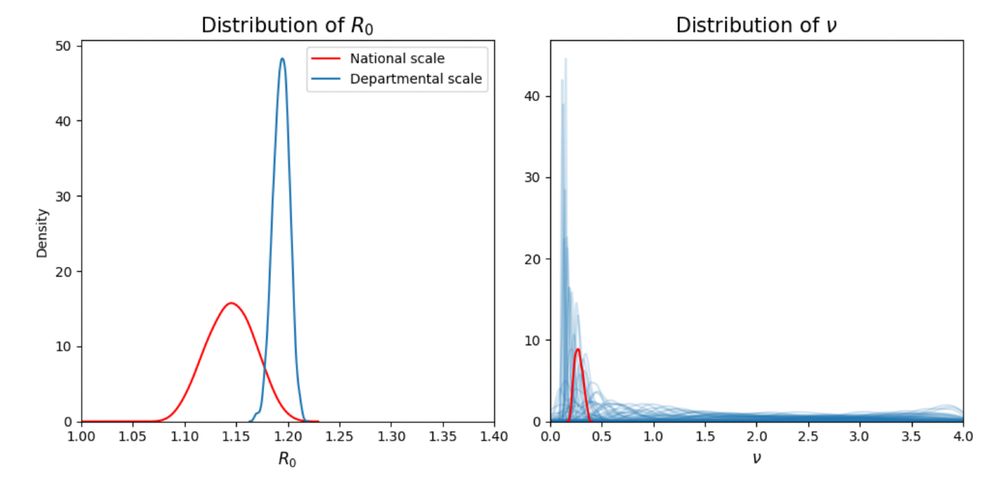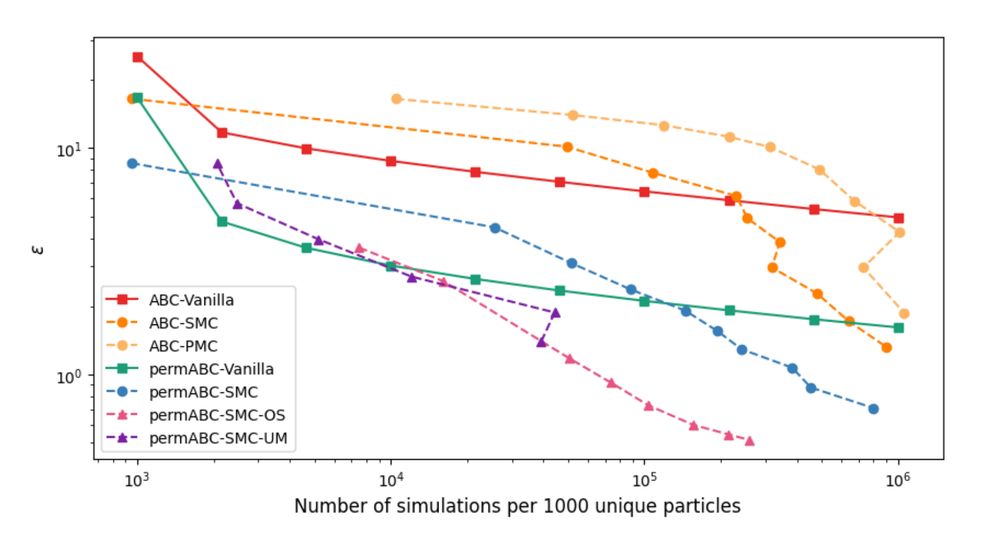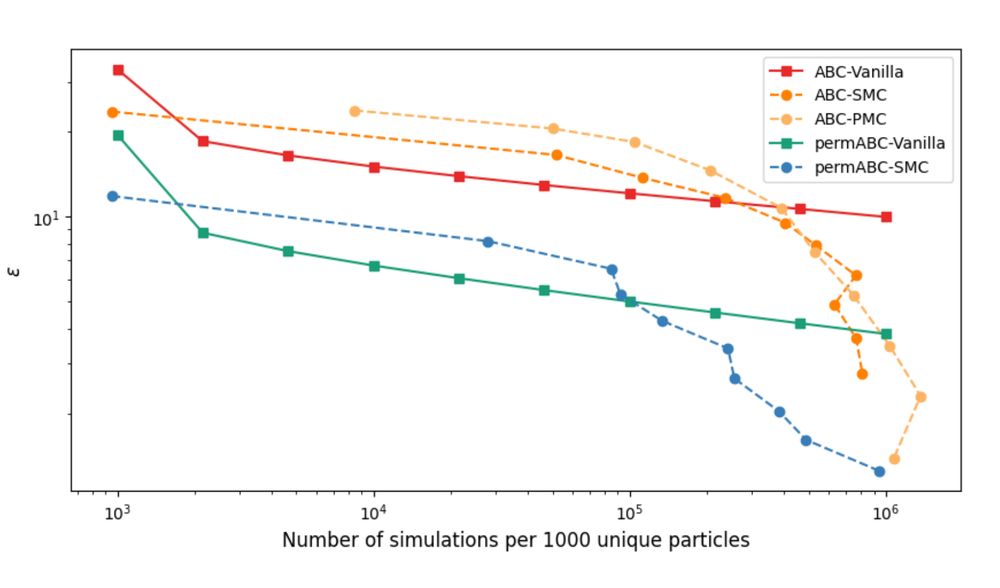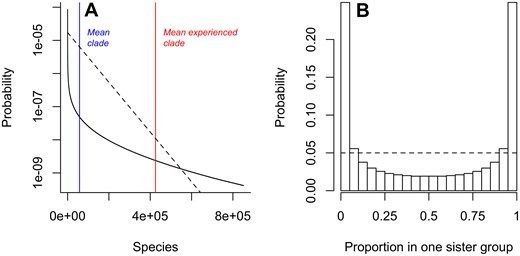Applications are invited for Chapman Fellow in Mathematics (Statistics Section) at the Department of Mathematics.
Closing date: 11 November 2025
www.imperial.ac.uk/jobs//search...
09.10.2025 11:51 — 👍 0 🔁 3 💬 0 📌 0
Jolie illustration du paradoxe de Simpson !
07.10.2025 16:08 — 👍 1 🔁 0 💬 0 📌 0

Jane Goodall reaches out and touches a small monkey.
Jane Goodall was my first childhood hero, as I loved animals as a kid and was inspired by her story. I still remember the National Geographic specials about her. RIP.
01.10.2025 20:05 — 👍 22891 🔁 2664 💬 369 📌 148
It's a great opportunity for recent PhD graduates who wish to pursue a career in academia.
Salary: in the range £49,017 - £57,472 per annum
Deadline to apply: 11 November.
Please contact me if you have questions!
01.10.2025 12:39 — 👍 1 🔁 0 💬 1 📌 0
Imperial College London Authentication - Stale Request
We are hiring!
We are inviting applications for the Chapman Fellowship in Statistics at Imperial College London.
This is a kind of super-postdoc: 3 years contract, excellent working conditions, and candidates are expected to propose an independent research plan.
www.imperial.ac.uk/jobs//search...
01.10.2025 12:39 — 👍 6 🔁 4 💬 1 📌 0
Proposals for contributed talks & posters are now being accepted for the 2026 ISBA World Meeting! The world meeting will take place in Nagoya, Japan between 28 June and 3 July, 2026. Proposals may be submitted here: forms.gle/dVTUrdEuVF6g...
24.09.2025 22:33 — 👍 7 🔁 7 💬 1 📌 1
Of course! It's open to all countries.
22.09.2025 19:53 — 👍 1 🔁 0 💬 0 📌 0
Update: the ISBA membership section has been updated. You can (and should 😉) now join our section!
22.09.2025 19:48 — 👍 0 🔁 0 💬 0 📌 0
The newest section of ISBA has been formed to promote Bayesian methods in the social sciences! Find out more 👇
22.09.2025 14:10 — 👍 4 🔁 1 💬 0 📌 0
Do get in touch if you'd like to be involved.
ISBA members will be able to join the section (via the ISBA website) very soon.
The next Bayesian Methods in the Social Sciences conference is planned for December 2026 in Dublin. Watch this space!
22.09.2025 10:25 — 👍 2 🔁 0 💬 1 📌 0
I'm delighted to serve as Chair-Elect for this new section, along with Chair @adrianraftery.bsky.social, Programme chair @nialfriel.bsky.social, Treasurer @monjalexander.bsky.social, and Secretary EJ Wagenmakers.
I'm looking forward to building this section and serving the community!
22.09.2025 10:25 — 👍 6 🔁 1 💬 1 📌 0
Home - BSS-ISBA
I'm super excited to announce that ISBA @isba-bayesian.bsky.social has voted to start a new section on Bayesian Social Sciences! It will be a great way to further collaborations with many disciplines in the Social Sciences and Humanities.
bss-isba.github.io
22.09.2025 10:25 — 👍 24 🔁 8 💬 2 📌 0
A great overview of SBI by @fxbriol.bsky.social
If you missed the conference, check out his slides!
28.08.2025 11:59 — 👍 5 🔁 0 💬 1 📌 0
The wonderful Niamh Cahill is recruiting a PhD student (co-supervised by me!) to work on estimating and projecting population exposure to extreme sea levels. Please contact me if interested!
28.07.2025 14:37 — 👍 10 🔁 5 💬 0 📌 0
I am pleased to announce that together with some friends, we are organising a workshop on Non-Reversible MCMC Sampling, taking place at Newcastle University from 8–10 September 2025.
Details on the programme and registration can be found at the workshop website (sites.google.com/view/probai-...).
24.07.2025 11:28 — 👍 31 🔁 12 💬 2 📌 3
UZH: Statistician
Within the National Center of Competence in Research (NCCR) Evolving Language and its 46 different research groups from a large variety of disciplines across Switzerland, and the University of Zurich ...
Exciting new opening @nccrlanguage.bsky.social with the option of permanent extension. If you work in cutting-edge stats and are interested in joining a highly inter-disciplinary, vibrant community, don't hesitate to apply at tinyurl.com/3fxwjk8e
18.07.2025 12:06 — 👍 6 🔁 9 💬 0 📌 0
Using Bayesian tools to be a better frequentist
New on the blog: Using Bayesian tools to be a better frequentist
Turns out that for neg. bin. regression with small samples, standard frequentist tools fail to achieve their stated goals. Bayesian computation ends up providing better frequentist guarantees. www.martinmodrak.cz/2025/07/09/u...
11.07.2025 05:48 — 👍 68 🔁 17 💬 5 📌 4

Posterior distribution for two parameters.
Left: parameter R0. The posterior using a model at the departmental level is much more peaked that the posteriror using a model at the national level.
Right: paramer ν. There is only one curve at the national curve, but many individual posteriors at the departmental level, showing a lot of heterogeneity.

Map of France showing the paramer ν_k at each department. values are lower in the North-East (ν_k of the order of 0.5 and larger in the West (values varying between 1 and 3.5).
The methods scale well (by ABC standards). Here is the output on real data with about 300 parameters to infer. Notice that the local parameters do vary quite a lot, and allowing for that variation allows for better inference of the global parameters.
09.07.2025 09:11 — 👍 2 🔁 0 💬 0 📌 0

Performance of 7 algorithms. For most of the figure, the ordering is: worst ABC-SMC, the ABC-Vanilla or ABC-SMC, then permABC-Vanilla or permABC-SMC, then Under-Matching, then Over-Sampling
We have found that both Over Sampling and Under Matching give significant improvements with mis-specified models or outliers, as these schemes make it easier to catch the tails of the posterior predictive.
09.07.2025 09:11 — 👍 2 🔁 0 💬 1 📌 0
We then progressively increase M₀<M₁<… <Mₜ=K, giving another sequential scheme. We could combine over sampling and under matching but haven't considered that in this paper.
09.07.2025 09:11 — 👍 1 🔁 0 💬 1 📌 0
In Under Matching, we take the complementary approach: we simulate synthetic data of the appropriate size, but the distance between synthetic and observed data is only computed on the closest M₀ compartments. Again, matching is easier, since we start with the easiest parts of the data.
09.07.2025 09:11 — 👍 0 🔁 0 💬 1 📌 0
We then progressively decrease L₀>L₁>… >Lₜ=K. This defines a different sequential scheme, which is practical because we are allowing for permutations of the data.
09.07.2025 09:11 — 👍 0 🔁 0 💬 1 📌 0
In Over Sampling, we will instead simulate "too much" data. Say the observed data have K=94 compartments: we will initially simulate synthetic data with L₀=1000 compartments, and keep the best match for each compartment. Note that matching is easier, even for a low value of ε!
09.07.2025 09:11 — 👍 0 🔁 0 💬 1 📌 0
Say you are targeting a pseudo-posterior with some threshold ε. A standard ABC-SMC scheme consists in considering a (possibly adaptive) schedule ε₀>ε₁>…>εₜ=ε.
Each iteration of the SMC tightens the approximation, and eventually you reach the target pseudo-posterior with low value of ε.
09.07.2025 09:11 — 👍 1 🔁 0 💬 1 📌 0
We then implement two new sequential strategies:
➡️ over sampling and
➡️ under matching.
These differ from traditional ABC-SMC sequences of distributions.
09.07.2025 09:11 — 👍 0 🔁 0 💬 1 📌 0

Performance curve of various algorithms. For most of the figure, the ordering is: worst ABC-PMC, then ABC-Vanilla and ABC-SMC, best either permABC-Vanilla or permABC-SMC
Taken alone, this natural idea already gives us a gain of an order of magnitude.
(In this figure, lower is better.)
09.07.2025 09:11 — 👍 0 🔁 0 💬 1 📌 0
Assistant professor in Statistics at UW–Madison.
Interested in #Bayesian statistics, sports analytics, causal inference. Also cocktails and Dallas sports. #mffl
Professor of Statistics at University of Warwick; computational methods, Monte Carlo, gradient flows and fun things like those.
Director, NCCR Evolving Language (www.evolvinglanguage.ch) and Professor of General Linguistics at the University of Zürich, Switzerland
Senior Researcher, Institut Jean-Nicod, CNRS, Paris
Views expressed are my own. Retweet ≠ endorsement.
👨🏫 Statistics, Data Science and Ethical ML
📍 Oxford // London
🏃♂️🧶📖 ☕ 🏳️🌈
assist prof of stats at Imperial College London
Professor of Statistics
Head of the Department of Mathematics
Imperial
Prof of Demography & Population Health @oxforddemsci.bsky.social | Mortality, Epidemiology, Infections/Immunity, Biosocial science, COVID-19. | Science Communicator 🇺🇸 in 🇬🇧.
Substack: https://jenndowd.substack.com
Taylor Swift. 🫶🏼 Getting updates from other social media apps so you don’t have to 🥳
⚡️Plus ancien site d'actualité Harry Potter et Animaux fantastiques francophone aux côtés des potterheads.
🗞️ https://www.gazette-du-sorcier.com
🦉 redaction[at]gazette-du-sorcier.com
Cultural evolution researcher at the University of Exeter (Penryn campus), UK.
President of the Cultural Evolution Society @culturalevolsoc.bsky.social
Website: alexmesoudi.com
Député des Français d’Europe du Nord | 🇬🇧🇮🇪🇸🇪🇳🇴🇩🇰🇫🇮🇮🇸🇱🇻🇪🇪🇱🇹 | Réserviste de la Marine nationale ⚓️ | Commission des lois 🇫🇷
Statistician at UW developing methods for demography, climate change, cluster analysis, model selection & averaging.
Exploring the intersection of culture, evolution, psychology and anthropology. We study how culture and evolution shape human behaviour and society
Professor of Statistics at Bocconi University
The official account for the Cultural Evolution Society. Our mission is to promote the study of cultural evolution in research and practice.
www.culturalevolutionsociety.org







